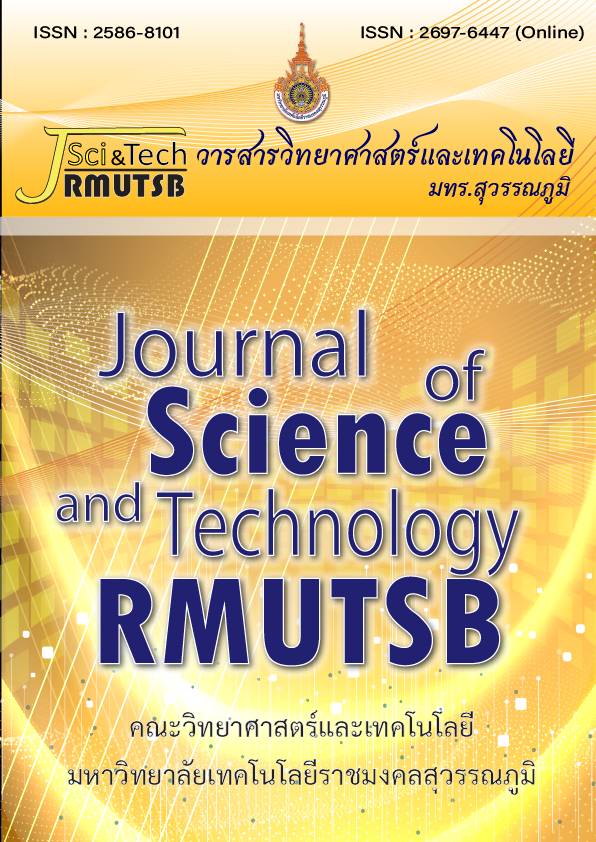วิธีทดสอบหาปริมาณคอลลาเจนในผลิตภัณฑ์เครื่องดื่มที่มีส่วนผสมของคอลลาเจนไฮโดรไลเซส ด้วยเทคนิคโครมาโทรกราฟีของเหลวสมรรถนะสูงร่วมกับตัวตรวจวัดชนิดฟลูออเรสเซนส์
คำสำคัญ:
คอลลาเจนไฮโดรไลเซส, โครมาโทรกราฟีของเหลวสมรรถนะสูง, การตรวจสอบความใช้ได้ของวิธีบทคัดย่อ
งานวิจัยนี้มีวัตถุประสงค์เพื่อศึกษาวิธีการทดสอบหาปริมาณคอลลาเจนในผลิตภัณฑ์เครื่องดื่มที่มี ส่วนผสมของคอลลาเจนไฮโดรไลเซส โดยใช้สารก่ออนุพันธ์ชนิด FMOC-Cl และตรวจวิเคราะห์ด้วยเทคนิค โครมาโทรกราฟีของเหลวสมรรถนะสูงร่วมกับตัวตรวจวัดชนิดฟลูออเรสเซนส์ และคูณด้วยปัจจัย (conversion factor) เท่ากับ 7.25 เพื่อให้ได้ค่าปริมาณคอลลาเจนในตัวอย่าง พบว่าผลิตภัณฑ์เครื่องดื่มที่มีวางขายในท้องตลาดมี ปริมาณคอลลาเจนอยู่ในช่วงตั้งแต่ 0.1-25.0% ท าการตรวจสอบความใช้ได้ของวิธีทดสอบปริมาณคอลลาเจนให้ ครอบคลุมกับกลุ่มตัวอย่างดังกล่าว พบว่าสารมาตรฐานมีช่วงการใช้งานที่เป็นเส้นตรงความเข้มข้นตั้งแต่ 0.5-50 mg/L มีค่าสัมประสิทธิ์สหสัมพันธ์ เท่ากับ 0.996 ขีดจ ากัดของการตรวจพบและขีดจ ากัดของการวัดเชิง ปริมาณได้ เท่ากับ 0.004% และ 0.013% ตามล าดับ และความเที่ยงของการทดสอบซ้ าในวันเดียวกันและต่างวัน โดยพิจารณาจากค่า %RPD มีค่าเท่ากับ 8.16% และ 7.48% ตามล าดับ ส่วนความแม่นของการทดสอบมีค่าการคืน กลับอยู่ในช่วง 80-110% ที่ระดับของสารที่สนใจไม่เกิน 10 mg/L และมีค่า Horwitz ratio น้อยกว่า 2 ซึ่งเป็นไป ตามมาตรฐานห้องปฏิบัติการ แสดงให้เห็นว่าวิธีการทดสอบปริมาณคอลลาเจนในผลิตภัณฑ์เครื่องดื่มที่มีส่วนผสม ของคอลลาเจนไฮโดรไลเซสดังกล่าว มีความถูกต้อง เหมาะสมที่จะน ามาใช้ในการปฏิบัติงานประจำต่อไป
เอกสารอ้างอิง
Moskowitz RW. Role of collagen hydrolysate in bone and joint disease. Seminars in Arthritis and Rheumatism, 2000, 30(2) p. 87-99.
AOAC Official method 990.26, official methods of analysis, 17th edition. Association of Official Analytical Chemists, Gaithersburg, MD, 2000.
Messia MC, Di Falco T, Panfili G, Marconi E. Rapid determination of collagen in meat-based foods by microwave hydrolysis of proteins and HPAEC-PAD analysis of 4-hydroxyproline. Meat Science, 2008, 80(2), p. 401-409.
Green, G.D., Reagan, K. Determination of hydroxyproline by high pressure liquid chromatography. Analytical Biochemistry, 1992, (201) P. 265-269.
Lareu, R.R., Zeugolis, D.I., Abu-Rub, M., Pandit, A., and Raghunath, M. Essential modification of the Sircol Collagen Assay for the accurate quantification of collagen content in complex protein solutions. Acta Biomaterialia, 2010, p. 3146–3151.
Lin, Y.K., and Kuan, C.Y. Development of 4-hydroxyproline analysis kit and its application to collagen quantification. Food Chemistry. 2010, p. 1271-1277.
Taskiran, D., Taskiran, E., Yercan, H., and Kutay, F.Z. Quantification of total collagen in rabbit tendon by the Sirius Red Method. Turkish Journal of Medical Sciences, 1997, p. 7-9.
Gelse, K., Poschl, E. and Aigner, T. Collagens-structure, function and biosynthesis. Advanced Drug Delivery Reviews, 2003, 55(12) p. 1531-1546.
González-Martín, M.I., Bermejo, C.F., Hierro, J.M.H. and Sánchez González, C.I. Determination of hydroxyproline in cured pork sausages and dry cured beef products by NIRS technology employing a fibre–optic probe. Food Control, 2009, (20) p. 752–755.
Colgrave, M.L., Allinghama, P.G, and Jones, A. Hydroxyproline quantification for the estimation of collagen in tissue using multiple reaction monitoring mass spectrometry. Journal of Chromatography A. 2008, (1212) p.150–153.
Hofman, K., Hall, B., Cleaver, H. and Marshall, S. High-throughput quantification of hydroxyproline for determination of collagen. Analytical Biochemistry, 2011, (417) p. 289–291.
Dai, Z., Wu, Z., Jia, S. and Wu, G. Analysis of amino acid composition in proteins of animal tissues and foods as pre-column o-phthaldialdehyde derivatives by HPLC with fluorescence detection. Journal of Chromatography B, 2014, (964) p. 116-127.
Aditya A. Isolation, Purification, and Collagen Characterization from Pig Skin, and Glisin, Prolin, and Hydroxyproline Analysis in Characterization of High Performance Liquid Chromatography-Fluorescence. Depok, Thesis. Faculty of Pharmacy, Universitas Indonesia, 2017.
Paul R., Hutson Mark E. Crawford, Ronald L., Sorkness. Liquid chromatographic determination of hydroxyproline in tissue samples. Journal of Chromatography B, 2003, (791) P. 427-430.
AOAC Peer Verified methods Program. Manual on policies and procrdures. Arlington, VA, Nov.1993.
ดาวน์โหลด
เผยแพร่แล้ว
รูปแบบการอ้างอิง
ฉบับ
ประเภทบทความ
สัญญาอนุญาต

อนุญาตภายใต้เงื่อนไข Creative Commons Attribution-NonCommercial-NoDerivatives 4.0 International License.





